This field day was an opportunity to meet Dr Jason Condon, Associate Professor in Soil Science from Charles Sturt University and Helen Burns Development Officer – Pastures from the NSW Department of Primary Industries. We visited two farms just outside Canberra to talk about the major findings of the Grassing the Bare Patches Demonstration and learn about soils from Jason. Farmers Jennie Curtis, Harjinder Dhindsa and Allan Spencer shared their experiences from the Grassing the Bare Patches project.
It was interesting to look at the differences in the soils between the properties and see the factors limiting pasture growth. At Jennie’s farm, Jason showed us how to test for dispersive soils, soil pH and soil structure. We looked at the soil profile and the soil test results together. We could see the effect that soil acidity was having on root growth below 10cm, where low pH and high aluminium were stunting root growth and causing roots to grow sideways. Jason explained that high aluminium in the soil stops the uptake of nutrients by plants because the ion spaces on the plant roots are filled with the Al ion. The application of liming materials to increase the pH will inactivate the aluminium, thus increasing the level of plant available nutrients. Jason explained that soil pH closer to neutral favours conditions for soil microbes to replicate and flourish. The dispersion test showed that soils lower in the soil profile are vulnerable to erosion. Ripping or cultivating the soil at these depths could be risky.
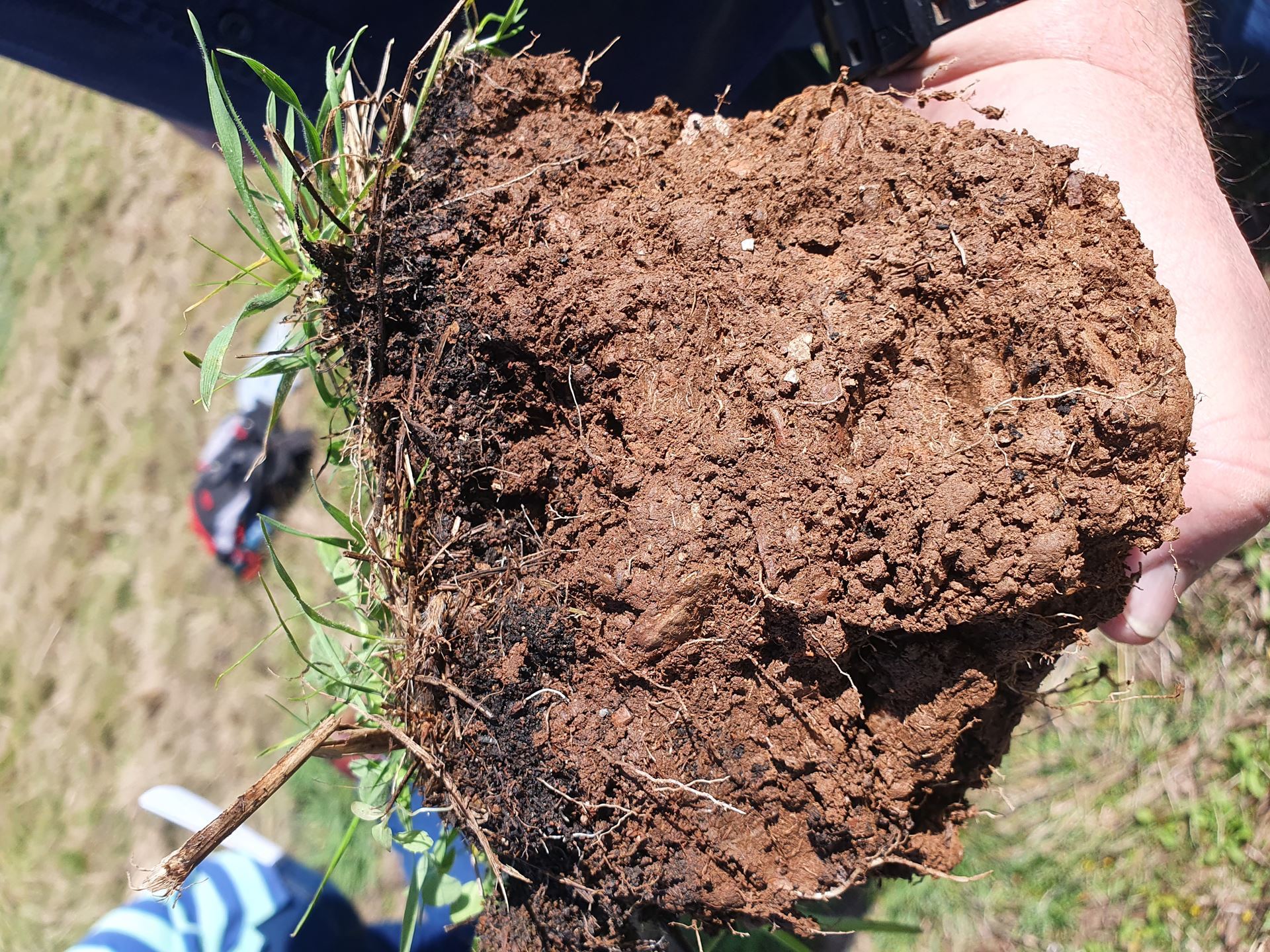
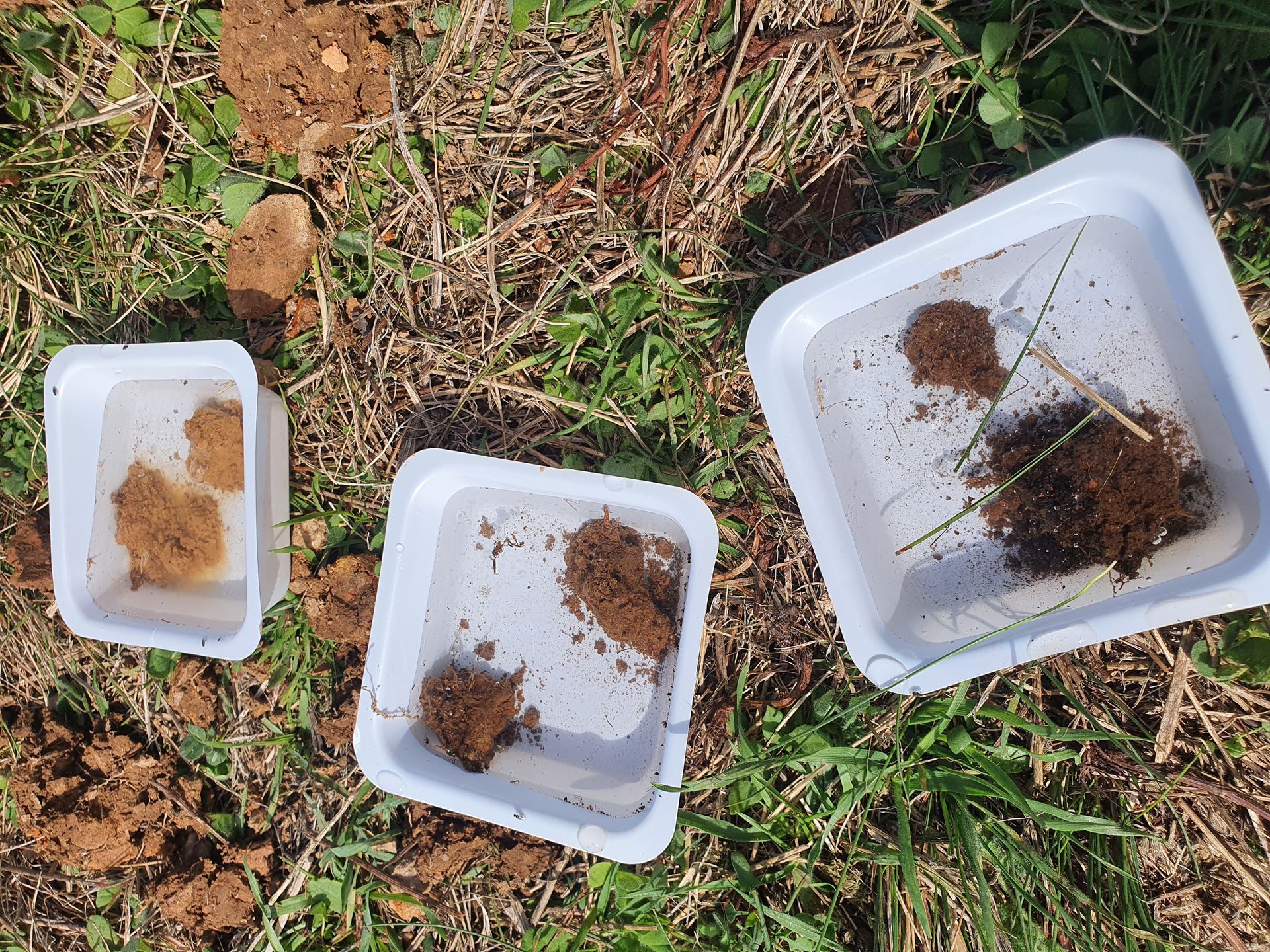
Jason discussed the methodology for addressing low soil pH, suggesting the initial application of lime for the project could be 2.5 tonnes per hectare. The removal of agricultural products acidifies the soil, therefore agricultural soils will become more acidic over time. Selecting pastures with low pH tolerance is one strategy to help combat acid soils but over time the species of plants you can grow will be narrowed. Jason suggested that is it better to address the soil factors limiting pasture growth through liming, correct fertiliser application and increasing soil carbon.
At Harjinder’s farm, Jason dug another series of soil profiles, it was interesting to see the effect that the physical soil characteristics were having on the pasture. At this farm the demonstration plot had been cultivated to 15cm over a number of years. Harjinder explained how his crops would grow to a certain height and then wilt and die. Jason showed us the effect that a cultivation hardpan was having on root growth. The hard pan was causing J rooting and had formed a barrier preventing the roots growing below 15cm. Helen told us that once off deep ripping could be a remedy, as well as planting an annual cover crop of rye grass that is renowned for helping breaking down hard pans. A reference for using rye grass and clover in citrus orchards is included in the resources section below, look for the heading ‘Permanent Sod Culture’.
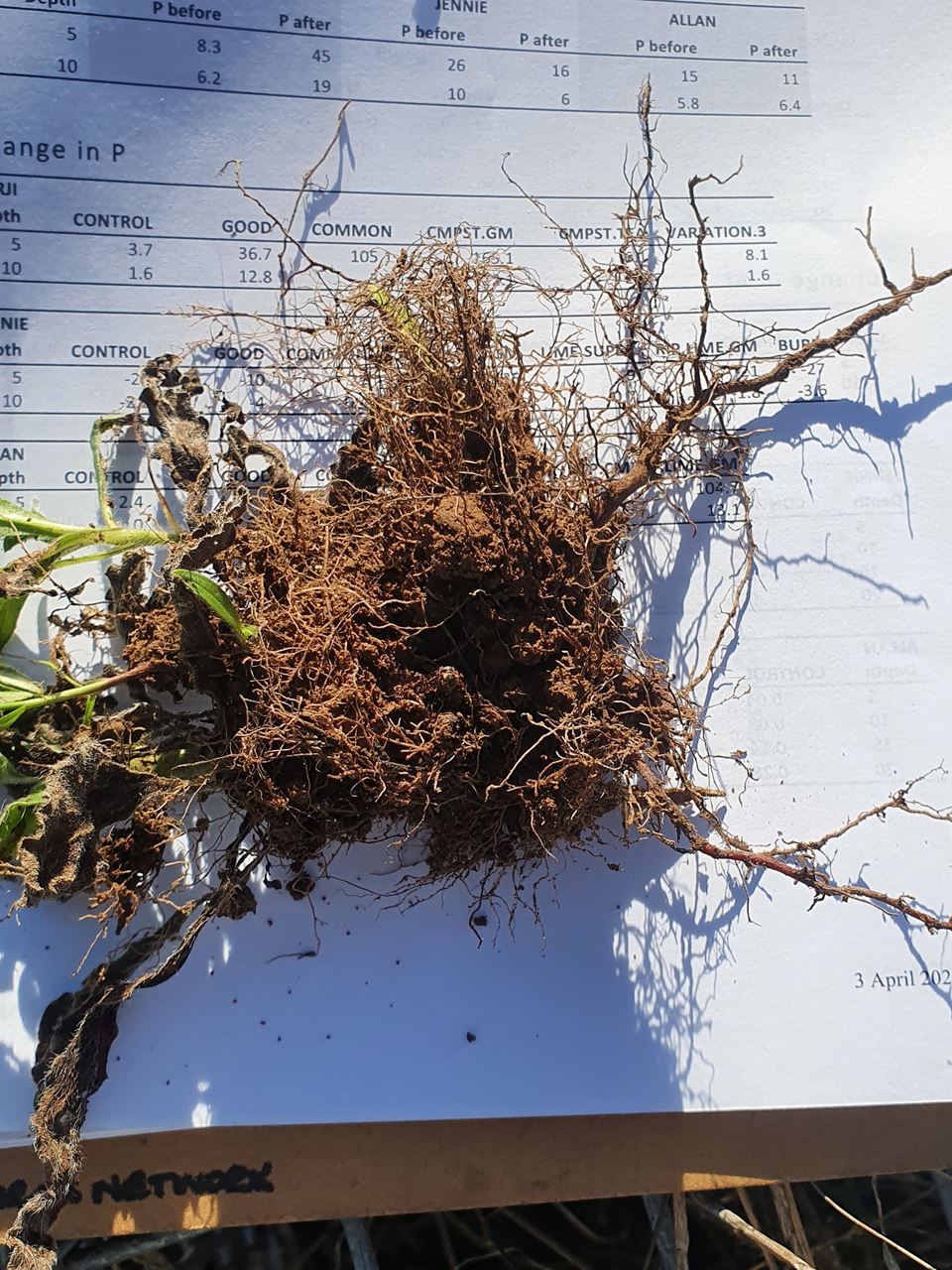
We learnt that the usual soil testing approach where samples from the 0-10cm range are combined is not always useful in a pasture management context because soil and physical factors can vary significantly though the soil profile. In this case, physical factors lower in the soil profile were preventing root growth. One simple way for landholders to look at soil acidity and texture below 10cm is to use a dig stick to take deeper soil samples and then use a home pH test kit to see the variation in pH at different depths. The home test kits show pH (water) which is different from lab tests for pH (CaCl).
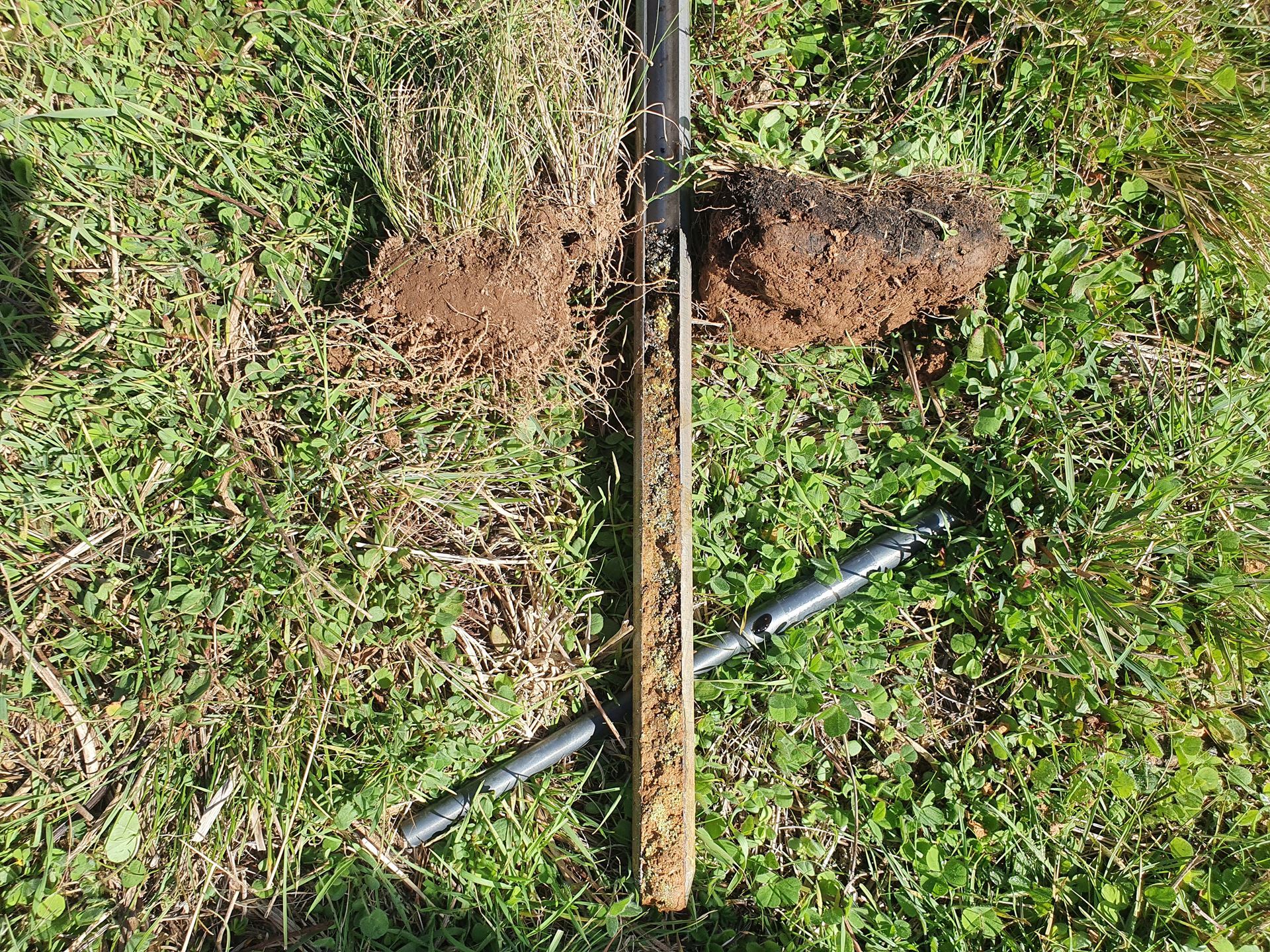
When we compared soil profiles from the control plots with soil profiles from the common treatment plots, growing green manure crops with minimal tillage appears to have been a useful strategy for increasing soil biology and improving soil texture on previously bare patches. One of the major observations from farmers hosting the demonstration plots is that green manure crops need to be managed by mowing or grazing to keep them short during the growing season. This allows other shorter species including sub clover to germinate and not be out competed. When the green manure was left to grow high in the trial plots, the biomass made it hard to sow the permanent grass seed since there was a lot of thatch covering the bare soil.
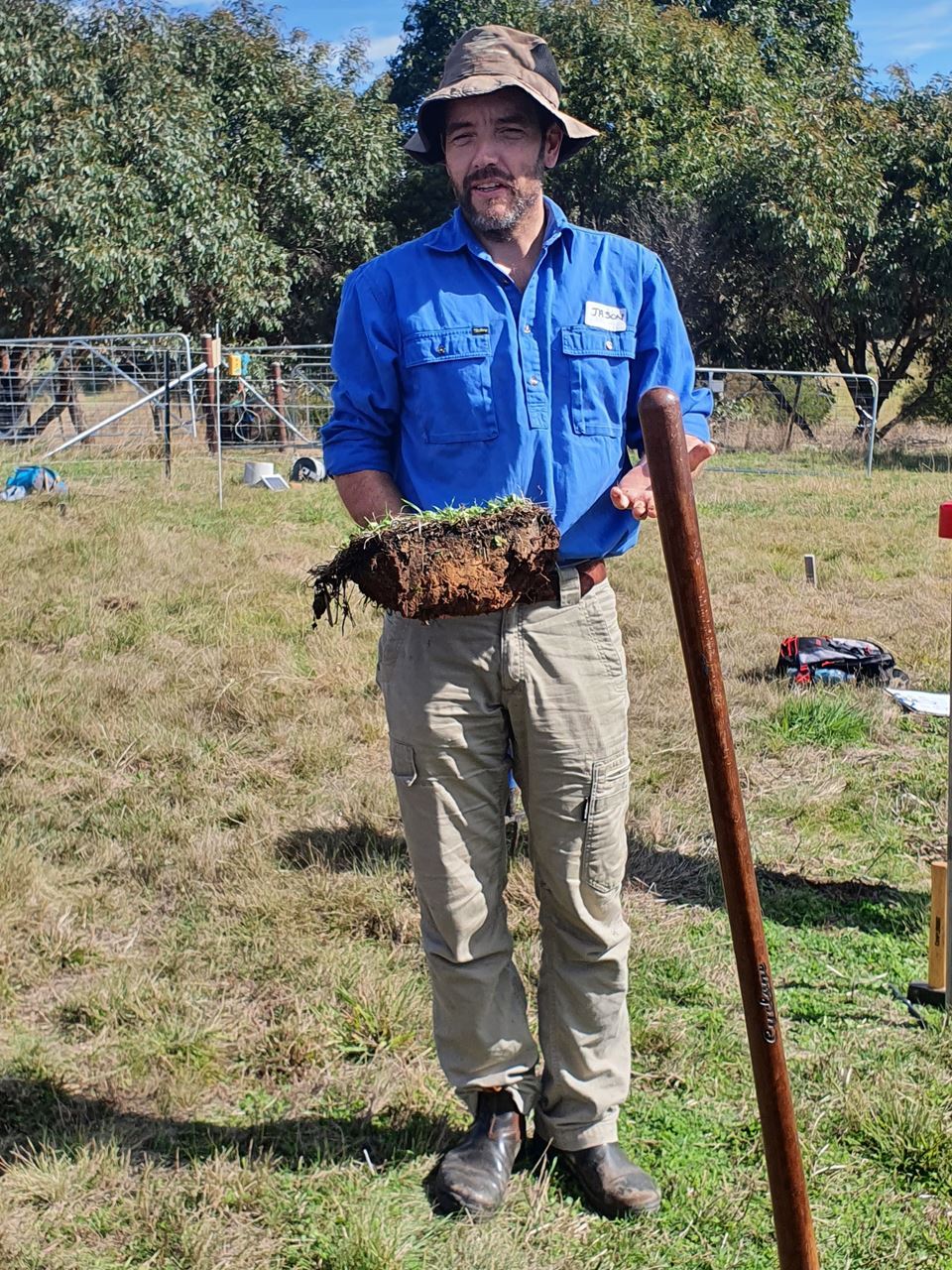
The farmers also found that using jute mesh in a pasture setting was limiting because the cover crop could not be slashed or mowed without machinery becoming entangled in the mesh. Jute mesh still has useful applications in more inaccessible erosion sites that would not be slashed or mown.
Further details about the final monitoring can be found here.
What will the farmers do next?
Jason asked us to think about what we had learned and what we would do next in the paddocks where the trial plots are.
Jennie is planning to apply lime at a rate of 2.5kg/ha over the surface of the paddock and elsewhere on the property to raise the pH of the soil. This will be a slow process but Jason told us that the lime will travel down through the soil profile if the surface pH(CaCl) is 5.5. She is also intending to surface broadcast Crimson Clover on bare patches as an early coloniser and green manure and manage the height using strategic grazing. She observed that her sheep preferentially grazed the plots that had been limed and then grew green manure.
Allan found that deep ripping inhibited the growth of seed in one of his plots, on his property he will be using harrows to scratch in grass seed and lime on the surface of the soil. He will use green manure crops but only to get the soil processes going and he won’t allow them to grow higher than 600cm. He observed that excluding kangaroos had a big impact on the diversity of his control plot and that the kangaroos preferentially grazed the areas that had been limed. Allan also observed that increasing soil pH had a direct impact on Sifton bush (Cassinia sifton) germinating, there was no Sifton bush in the plots treated with lime or in the paddocks he has applied lime for growing oak trees for truffles.
Harjinder is keen to use organic methods to improve the fertility on his property and was surprised to see the impact that repeated cultivation had on the soil profile. He believes that doing something, whether that be applying lime, compost of fertiliser is better than leaving the bare patches of ground on your property. He could see definite improvement in the areas that the compost was applied to the ground, the grass seed germinated better and there was less space for weeds to colonise. He is investigating what to do next in the cultivation paddock to treat the soil compaction layer, future strategies may include deep ripping or growing cover crops to break up the compaction.
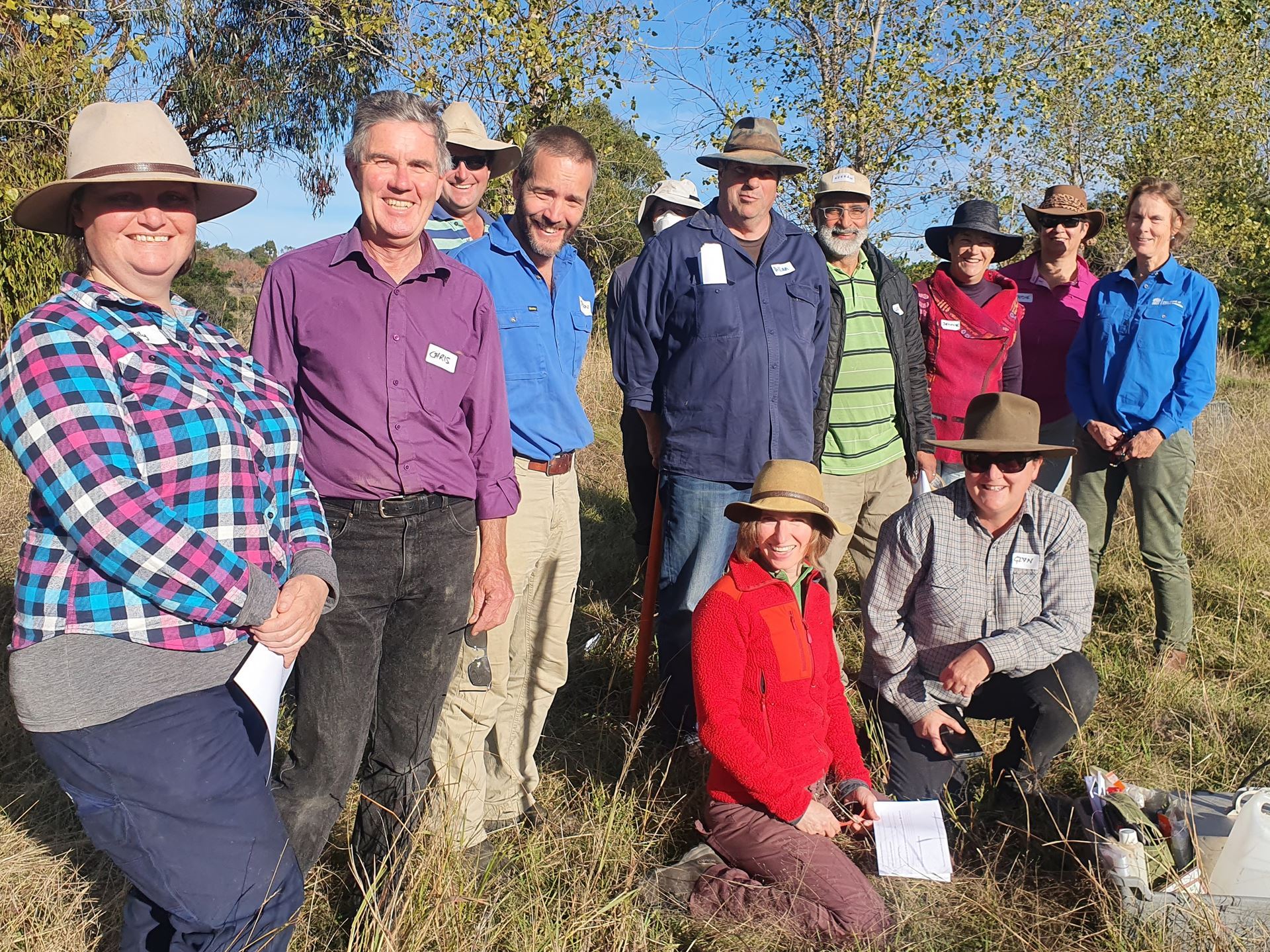
Resources
NSW DPI - Soil Acidity and Liming 4th Edition
Northern Rivers Soil Health Card
Sodic Soils
Soil test interpretation
Protect your soils from compaction
How to manage soil for citrus (using rye grass for compaction)
This project received funding from the National Landcare Program. South East Local Land Services provided funding for soil testing and provided technical support. Thank you to the demonstration plot farmers Jennie Curtis, Allan Spencer and Harjinder Dhindsa for their support and hosting the trials.